The Spitfire unearthed thread got me thinking about my favorite aircraft of World War II. The war produced many radical and timeless designs. It was extremely difficult narrowing it down to my top choices from each combatant country, but I gave it a shot.
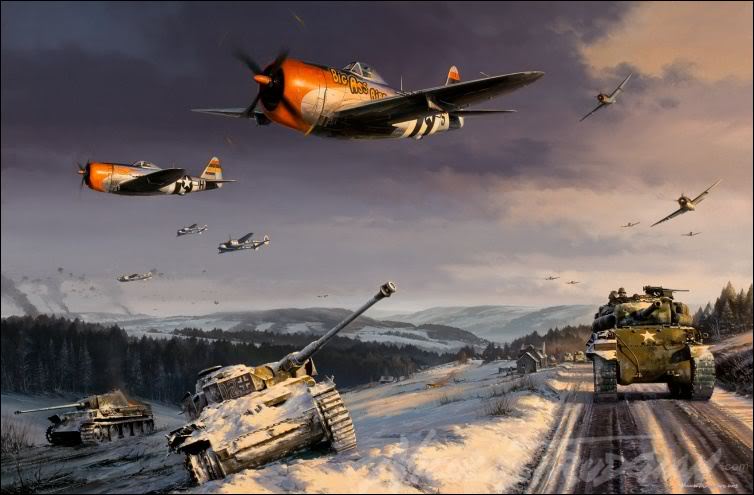
Republic P-47D Thunderbolt
My favorite U.S. aircraft of WWII was the P-47. The Jug, short for Juggernaut. It didn't have the graceful lines of the P-51, but it was big and bad. Built in greater quantities than any other US fighter, the P-47 was the heaviest single-engine WWII fighter to go into production and the first piston-powered fighter to exceed 500 mph. The 56th Fighter Group, which included legendary aces like Robert S. Johnson, Hubert Zemke, and Francis "Gabby" Gabreski, shot down 1006 German aircraft against the loss of only 128 P-47's, a kill ratio of 8-to-1 against the stiffest competition in the world. The Jug gained a reputation as a reliable and extremely tough airplane, able to take incredible amounts of damage and still return its pilot home safely. P-47s logged almost 2 million flight hours during the war, during which they were responsible for the destruction of over 7,000 enemy aircraft in the air and on the ground in the European Theater alone.
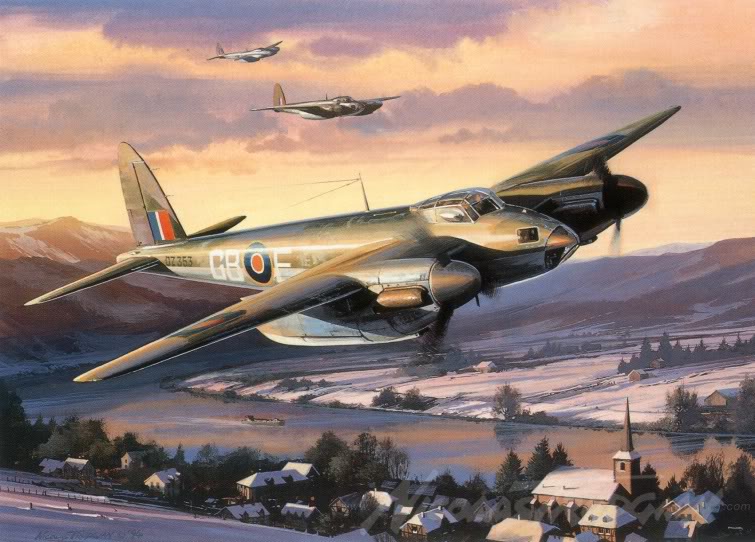
de Havilland Mosquito
The de Havilland Mosquito holds the No. 1 spot for RAF aircraft. Wicked fast with great range, it was the most versatile aircraft of the war. Its duties included missions of low-level and high-attack, day and night bomber, long-range photo-reconnaissance, mine layer, pathfinder, high-speed military transport, long-range day and night fighter, and fighter-bomber.
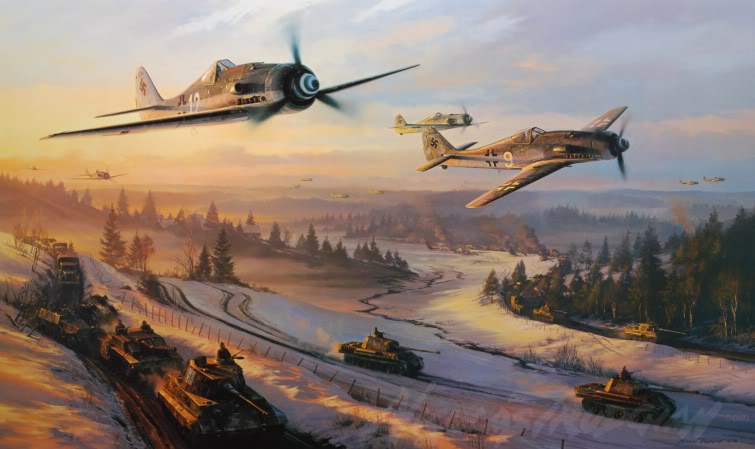
Focke Wulf Fw 190 D9
The Focke Wulf Fw 190 series tops my list for the Luftwaffe. Kurt Tank's fighter was fast, formidable, versatile and reliable. One of the unusual features of the fighter commented on by test pilots was the fact that, at high altitude and high speed, the BMW 801 radial engine produced a pair of contrails which started immediately behind the exhaust exits and completely hid the wings. Its appearance in the skies over France in early 1941 was a rude awakening to the Allies, as it was clearly superior to any other plane. For nearly a year, until the debut of the Spitfire IX, the Fw 190 was the unmatched champion of the air war. No fewer than 40 different versions were produced, with different combinations of engines, armament, wings, systems, and roles.
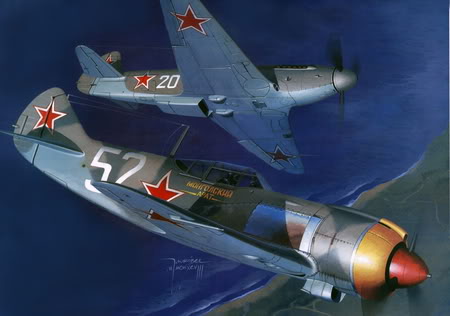
Lavochkin La-7
The top nod in the Soviet arsenal goes to the Lavochkin La-7. Tough and powerful, it proved to be a match against it's German adversaries, especially at lower altitudes. The request for this design was to build a fast, all-wooden fighter that could be mass-produced and still compete against the German Luftwaffe fighters, such as the Fw 190As and Bf 109Gs. Lavochkins were well liked by their pilots (in spite of bad takeoff and landing characteristics), and some of Russia's top aces flew them, including Ivan Kozedub, three time hero of the Soviet Union, the number one allied ace with 62 victories, all of them while flying Lavochkin fighters. He shot down 17 German aircraft, one of them being a Messerschmitt Me-262.
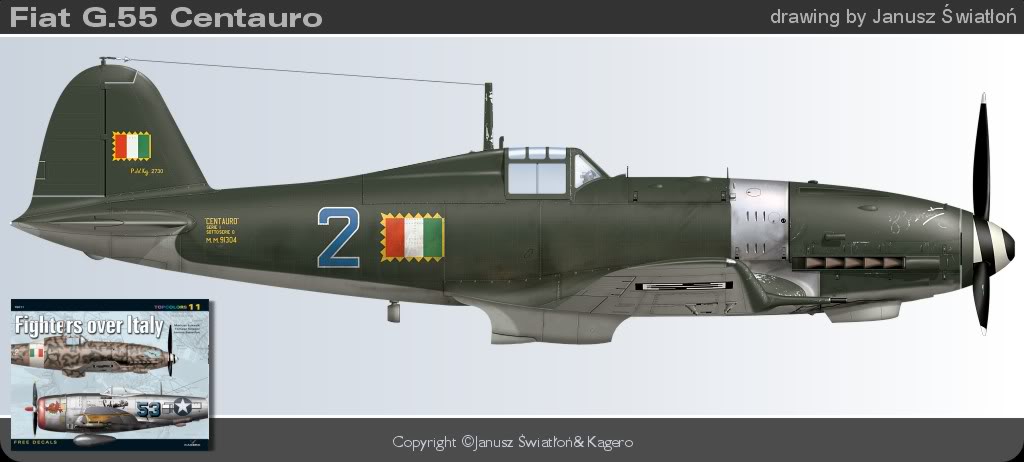
Fiat G.55
The Italians made some very interesting planes. The Fiat G.55 edged out the Macchi C.202, on my list. These inline-engine fighters were powered by German Daimler-Benz DB engines - the 605A in the Fiat and the 601 series in the Macchi. The Fiat, in particular, was about the sexiest-looking plane of the war. What would you expect from the country that gave us Ferrari?
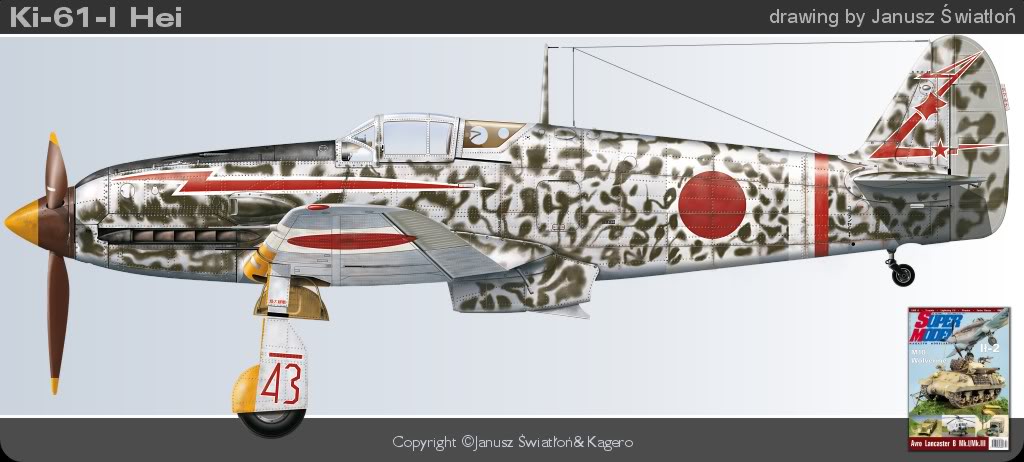
Kawasaki Ki-61
The Japanese produced some iconic aircraft, the most famous being the Mitsubishi A6M Zeke, more commonly known as the Zero. But my favorite Japanese plane is the Kawasaki Ki-61. It looked like the Japs version of the Messerschmitt Bf 109 with a bit of Macchi C.202 and P-51 thrown in. Swift and slick, it was the only in-line engined Japanese fighter of the war. The engine was a license-built Daimler Benz DB-601.

Republic P-47D Thunderbolt
My favorite U.S. aircraft of WWII was the P-47. The Jug, short for Juggernaut. It didn't have the graceful lines of the P-51, but it was big and bad. Built in greater quantities than any other US fighter, the P-47 was the heaviest single-engine WWII fighter to go into production and the first piston-powered fighter to exceed 500 mph. The 56th Fighter Group, which included legendary aces like Robert S. Johnson, Hubert Zemke, and Francis "Gabby" Gabreski, shot down 1006 German aircraft against the loss of only 128 P-47's, a kill ratio of 8-to-1 against the stiffest competition in the world. The Jug gained a reputation as a reliable and extremely tough airplane, able to take incredible amounts of damage and still return its pilot home safely. P-47s logged almost 2 million flight hours during the war, during which they were responsible for the destruction of over 7,000 enemy aircraft in the air and on the ground in the European Theater alone.

de Havilland Mosquito
The de Havilland Mosquito holds the No. 1 spot for RAF aircraft. Wicked fast with great range, it was the most versatile aircraft of the war. Its duties included missions of low-level and high-attack, day and night bomber, long-range photo-reconnaissance, mine layer, pathfinder, high-speed military transport, long-range day and night fighter, and fighter-bomber.

Focke Wulf Fw 190 D9
The Focke Wulf Fw 190 series tops my list for the Luftwaffe. Kurt Tank's fighter was fast, formidable, versatile and reliable. One of the unusual features of the fighter commented on by test pilots was the fact that, at high altitude and high speed, the BMW 801 radial engine produced a pair of contrails which started immediately behind the exhaust exits and completely hid the wings. Its appearance in the skies over France in early 1941 was a rude awakening to the Allies, as it was clearly superior to any other plane. For nearly a year, until the debut of the Spitfire IX, the Fw 190 was the unmatched champion of the air war. No fewer than 40 different versions were produced, with different combinations of engines, armament, wings, systems, and roles.

Lavochkin La-7
The top nod in the Soviet arsenal goes to the Lavochkin La-7. Tough and powerful, it proved to be a match against it's German adversaries, especially at lower altitudes. The request for this design was to build a fast, all-wooden fighter that could be mass-produced and still compete against the German Luftwaffe fighters, such as the Fw 190As and Bf 109Gs. Lavochkins were well liked by their pilots (in spite of bad takeoff and landing characteristics), and some of Russia's top aces flew them, including Ivan Kozedub, three time hero of the Soviet Union, the number one allied ace with 62 victories, all of them while flying Lavochkin fighters. He shot down 17 German aircraft, one of them being a Messerschmitt Me-262.

Fiat G.55
The Italians made some very interesting planes. The Fiat G.55 edged out the Macchi C.202, on my list. These inline-engine fighters were powered by German Daimler-Benz DB engines - the 605A in the Fiat and the 601 series in the Macchi. The Fiat, in particular, was about the sexiest-looking plane of the war. What would you expect from the country that gave us Ferrari?

Kawasaki Ki-61
The Japanese produced some iconic aircraft, the most famous being the Mitsubishi A6M Zeke, more commonly known as the Zero. But my favorite Japanese plane is the Kawasaki Ki-61. It looked like the Japs version of the Messerschmitt Bf 109 with a bit of Macchi C.202 and P-51 thrown in. Swift and slick, it was the only in-line engined Japanese fighter of the war. The engine was a license-built Daimler Benz DB-601.
Last edited:











